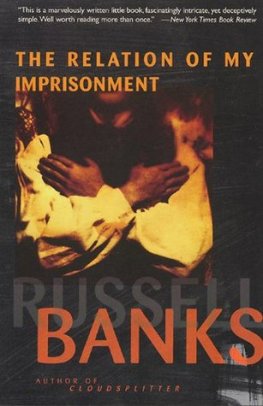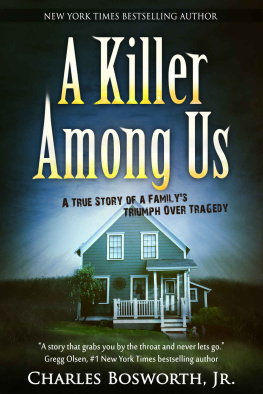Coyright 2011 by SAGE Publications, Inc
All rights reserved. No part of this book may be reproduced or utilized in any form or by any means, electronic or mechanical, including photocopying, recording, or by any information storage and retrieval system, without permission in writing from the publisher.
For information:
 | SAGE Publications, Inc. | SAGE Publications India Pvt. Ltd. |
| 2455 Teller Road | B 1/I 1 Mohan Cooperative Industrial Area |
| Thousand Oaks, California 91320 | Mathura Road, New Delhi 110 044 |
| E-mail: | India |
| SAGE Publications Ltd. | SAGE Publications Asia-Pacific Pte. Ltd. |
| 1 Olivers Yard | 33 Pekin Street #02-01 |
| 55 City Road | Far East Square |
| London EC1Y 1SP | Singapore 048763 |
| United Kingdom |
Printed in the United States of America
Library of Congress Cataloging-in-Publication Data
Bosworth,Mary.
Explaining U.S. imprisonment /Mary Bosworth.
p. cm.
Includes bibliographical references and index.
ISBN 978-1-4129-2486-3 (cloth)
ISBN 978-1-4129-2487-0 (pbk.)
1. ImprisonmentUnited States. 2. PrisonsUnited States.
3. PrisonersUnited States. I. Title. II. Title: Explaining US imprisonment.
HV9471.B675 2010
365.973dc22 2009019945
This book is printed on acid-free paper.
09 10 11 12 13 10 9 8 7 6 5 4 3 2 1
| Acquisitions Editor: | JerryWestby |
| Editorial Assistant: | Eve Oettinger |
| Production Editor: | KarenWiley |
| Copy Editor: | Bill Bowers |
| Proofreader: | Wendy Jo Dymond |
| Indexer: | Sheila Bodell |
| Typesetter: | C & MDigitals (P) Ltd. |
| Cover Designer: | Candice Harman |
| Marketing Manager | Jennifer Reed Banando |
Preface
D espite growing evidence of the prisons significant social and economic costs, in addition to longer-term concerns over its effectiveness and criticism of conditions behind bars, the United States appears committed to mass incarceration. The government relies on the prison not only to manage its domestic offenders but also, increasingly, to safeguard its borders from undocumented immigrants. Under the Bush administration, prisons were also deployed to hold suspected terrorists and those labeled enemy combatants. This book asks why? What explains the enduring appeal of the prison?
There are a number of reasons why a critical analysis of the purpose and nature of imprisonment is apposite. Well before the official acknowledgment of a financial meltdown, states were struggling to fund existing prison places, siphoning off money from other crucial responsibilities in education, health, and welfare. In the current economic climate, such problems will only worsen. So, too, as a result of sentencing and policing, many states and the federal system are struggling to deal with high levels of overcrowding. Even the most conscientious of wardens must find it difficult to offer meaningful time out of cell, counseling, treatment, adequate care, or job training. Indeed, evidence, including the number of states under various forms of judicial oversight, suggests that conditions in many facilities fail to meet legal thresholds of acceptability. Finally, the ever-expanding overrepresentation of Black and Hispanic men, women, and children behind bars raises troubling questions about the nations commitment to race equality.
In order to understand how we have arrived at the prisons of today, this book takes a long view of incarceration. Starting with accounts from the first colonies, it considers changing examples and explanations of imprisonment around the country. It is a work of historiography as much as history, setting out the dominant ideas behind imprisonment, as well as aspects of the prison across a range of states and time frames.
Though focused on the prison, this book has been conceived within the context of the broader theoretical body of work referred to as the sociology of punishment. It also reflects my own interest in issues of race and gender, and my belief that these topics continue to be inadequately dealt with in many criminological studies. It has been written for a number of audiences, from undergraduates to those conducting research on and even living in prison. Drawing on a range of source material that includes unpublished archives, statutes, court cases, academic studies, firsthand accounts, and newspaper articles, it maps out the changing debates that have framed, underpinned, and, it should not be forgotten, challenged U.S. prison. Indeed, a key theme of this study is to identify how people have opposed and criticized incarceration almost as much as they have lauded it.
Now that the new administration of President Barack Obama has taken the reins of power, the United States may be ready to revisit the logic of imprisonment and reduce its reliance on it. Second only to the death penalty, imprisonment is the most severe sanction the state can impose on any individual. It must, therefore, be constantly evaluated and justified. Yet, when was there last a serious public discussion of imprisonment? All too often, in the face of considerable evidence against it, its legitimacy is simply taken for granted. The problem of the prison is not simply that most of these peopleeven those labeled enemy combatantswill one day be released, but simply that it is an institution suffused with suffering, failure, injustice, and inadequacy. This is not a book arguing for abolition. It is, however, one that calls for a reduction in prison numbers and curbing of punitive sentiment. As the chapters will show, the prison has never lived up to our expectations; it is time for a change.
Acknowledgments
I n writing this book I have, as ever, benefited from the assistance from many colleagues, students, and family members. I have also been fortunate in my publisher and in my academic institution.
When I first began research for this book, in 2004, I was a visiting fellow at the Centre for Socio-Legal Studies at the University of Oxford, on sabbatical from a university post in the U.S., and anticipating an eventual return to America. In fact, I have, happily, remained in Oxford, taking up a University Lectureship at the Centre for Criminology and a Fellowship at St Cross College. This move has been extremely rewarding, and I am indebted to my colleagues and students here for providing such a friendly and rich intellectual environment. Oxford is a special place to live and work.
Moving jobs and countries, along with the arrival of my second daughter Sophia, have contributed to a significant delay in completing this manuscript. Either that, or I have finally joined the ranks of real academics, notorious as a group for always running late. Notwithstanding my delinquency in this area, Jerry Westby and the team at Sage have been understanding, and, above all, patient.











